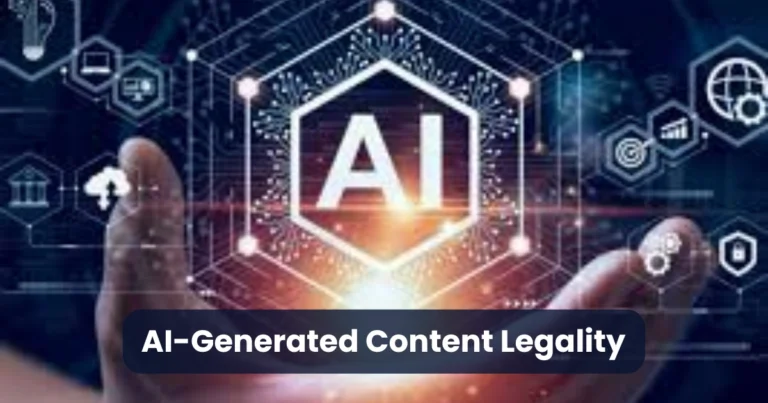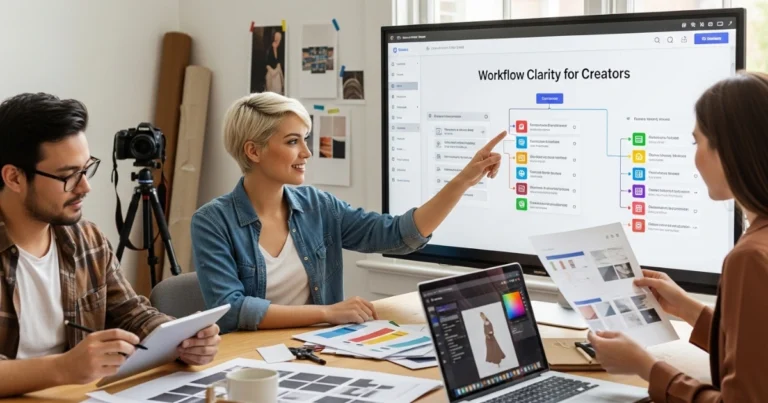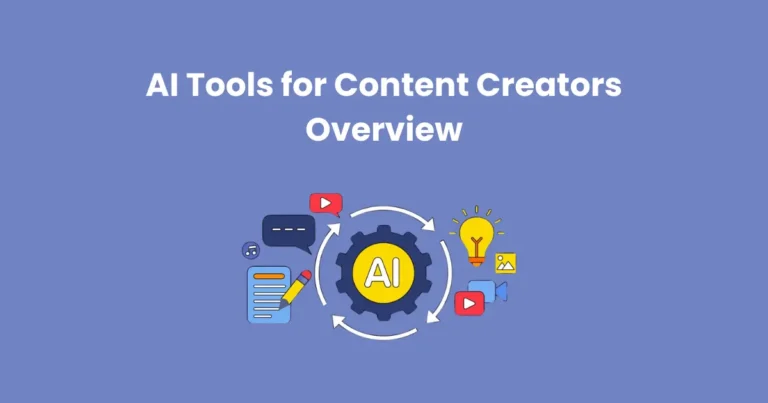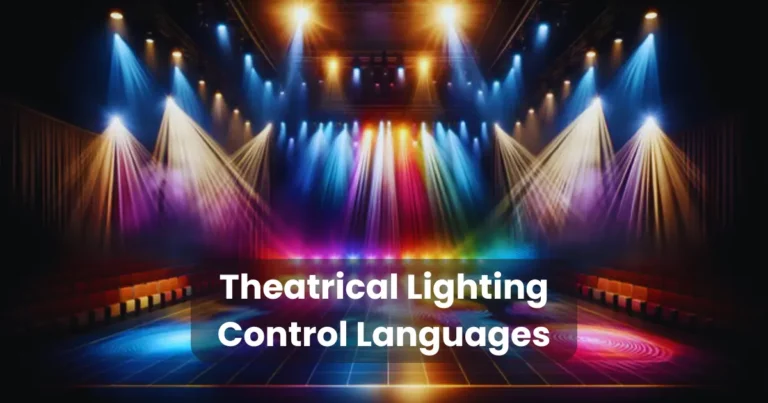State-of-the-Art Image-to-Video Technology
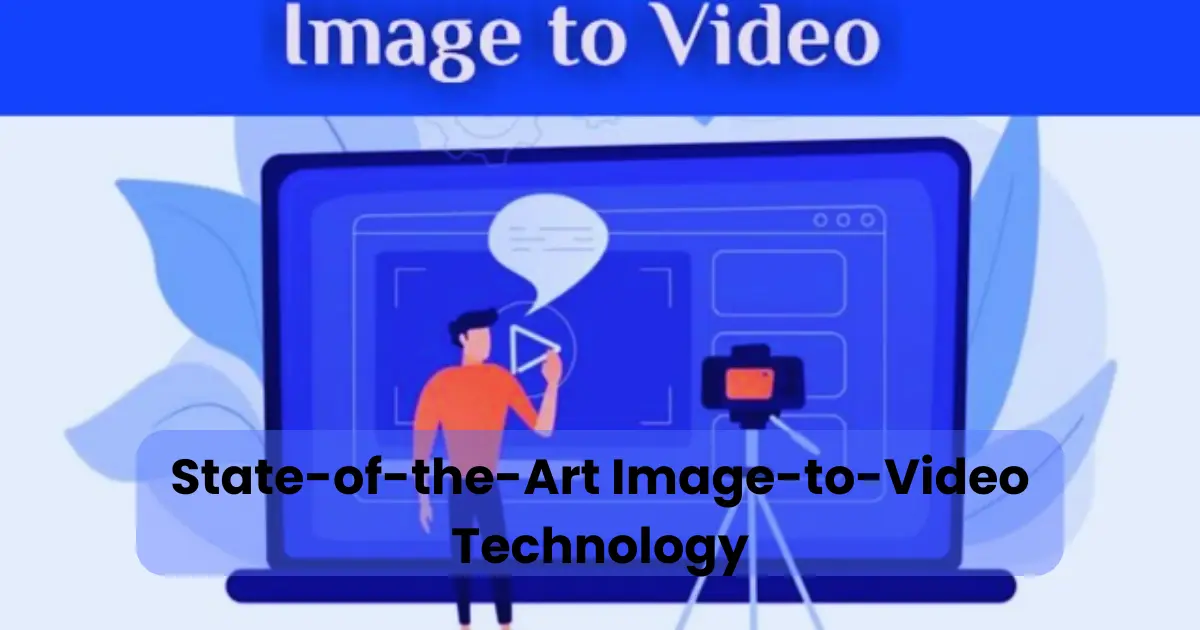
Contents
- 1 What is Image-to-Video Technology?
- 2 How State-of-the-Art Image-to-Video Technology Works
- 3 Key Features of Modern Image-to-Video Technology
- 4 Applications of State-of-the-Art Image-to-Video Technology
- 4.1 1. Film and Animation
- 4.2 2. Marketing and Advertising
- 4.3 3. Gaming and Virtual Reality
- 4.4 4. Social Media and Content Creation
- 4.5 5. Historical and Documentary Reconstruction
- 4.6 6. Healthcare and Medical Visualization
- 4.7 7. E-Learning and Educational Content
- 4.8 8. Deepfake Technology and Synthetic Media
- 4.9 9. Personalized AI Avatars and Digital Assistants
- 5 Advantages of Using Advanced Image-to-Video Technology
- 5.1 1. Time-Efficient Video Production
- 5.2 2. Cost-Effective Content Creation
- 5.3 3. Enhanced Creativity and Customization
- 5.4 4. Increased Engagement and Audience Retention
- 5.5 5. Accessibility for Non-Experts
- 5.6 6. Realistic Motion and Facial Animation
- 5.7 7. Seamless Integration with Other Technologies
- 5.8 8. Scalability for Businesses and Marketers
- 5.9 9. Historical and Cultural Preservation
- 5.10 10. Improved Learning and Training Experiences
- 6 Challenges and Limitations of State-of-the-Art Image-to-Video Technology
- 6.1 1. Quality and Realism Constraints
- 6.2 2. Ethical Concerns and Deepfake Misuse
- 6.3 3. Computational Power and Processing Time
- 6.4 4. Limited Context Awareness
- 6.5 5. Intellectual Property and Copyright Issues
- 6.6 6. Lack of Emotional Nuance
- 6.7 7. High Dependency on Data Quality
- 6.8 8. Cost of Premium AI Solutions
- 6.9 9. Security Risks and Privacy Concerns
- 6.10 10. Creative Limitations and Over-Reliance on AI
- 7 Future Trends in Image-to-Video Technology
- 7.1 1. Enhanced Realism with AI-Driven Motion Synthesis
- 7.2 2. Integration with Augmented Reality (AR) and Virtual Reality (VR)
- 7.3 3. Real-Time Video Generation and Editing
- 7.4 4. Personalized AI Avatars and Digital Humans
- 7.5 5. Ethical AI and Deepfake Regulation
- 7.6 6. AI-Powered Voice and Lip-Sync Animation
- 7.7 7. Low-Code and No-Code Video Creation Platforms
- 7.8 8. Higher-Quality AI-Generated Video Resolution
- 7.9 9. AI-Generated Video from Text Descriptions
- 7.10 10. AI-Assisted Creative Collaboration
- 7.11 Conclusion
In recent years, state-of-the-art image-to-video technology has revolutionized digital content creation. This cutting-edge innovation transforms static images into dynamic, high-quality videos using advanced artificial intelligence (AI) and deep learning techniques. As visual media continues to evolve, this technology enables content creators, marketers, and filmmakers to generate realistic motion effects without extensive manual animation.
By leveraging AI-driven motion prediction and neural networks, state-of-the-art image-to-video technology enhances storytelling, improves engagement, and opens new possibilities across various industries. From animation and gaming to marketing and virtual reality, this technology is reshaping the future of digital media production.
What is Image-to-Video Technology?
Image-to-video technology is an advanced AI-driven process that converts static images into dynamic videos by predicting and generating realistic motion. Using deep learning algorithms, this technology analyzes the elements within an image—such as facial features, background details, and object positioning—to create smooth, natural animations.
Modern state-of-the-art image-to-video technology relies on neural networks, computer vision, and motion synthesis techniques to bring still visuals to life. By applying motion estimation and frame interpolation, it generates video sequences that mimic real-world movements. This innovation eliminates the need for manual frame-by-frame animation, making video production faster, more efficient, and highly accessible.
With applications in animation, content creation, virtual reality, and marketing, state-of-the-art image-to-video technology is redefining how digital visuals are produced and consumed.
How State-of-the-Art Image-to-Video Technology Works
1. Image Analysis and Feature Detection
The process begins with AI analyzing the input image. Using deep learning models, the technology detects key features such as facial expressions, object contours, and background elements. These features serve as the foundation for generating smooth motion.

2. Motion Prediction Using AI Algorithms
State-of-the-art image-to-video technology utilizes neural networks trained on vast datasets of real-world movements. By studying patterns, the AI predicts how objects in the image would naturally move. For example, a still portrait can be animated with realistic lip-syncing, blinking, and head movements.
3. Frame Generation and Interpolation
Once motion patterns are predicted, the system generates intermediate frames to create a seamless transition from one movement to another. Advanced frame interpolation techniques ensure fluid motion without distortions or unnatural artifacts.
4. Deep Learning-Based Rendering
To enhance realism, deep learning models refine textures, lighting, and shading in each frame. High-resolution rendering ensures the final video maintains clarity and detail, even when generating complex animations.
5. AI-Powered Refinement and Output Processing
Before finalizing the video, AI algorithms refine motion consistency, adjust frame rates, and enhance colors to improve visual appeal. The processed video is then exported in high-quality formats suitable for various applications, including animation, marketing, and virtual reality.
By integrating AI, neural networks, and motion synthesis, state-of-the-art image-to-video technology transforms static images into dynamic videos with minimal manual effort. This innovation is driving new possibilities across creative and commercial industries.
Key Features of Modern Image-to-Video Technology
1. AI-Powered Motion Prediction
Modern state-of-the-art image-to-video technology leverages artificial intelligence to predict realistic movements based on the objects and subjects within an image. By analyzing massive datasets, AI can generate smooth transitions and natural-looking animations, eliminating the need for manual motion design.

2. Deep Learning and Neural Networks
Advanced neural networks power this technology, enabling it to recognize patterns, textures, and spatial relationships in an image. By using deep learning, the system enhances motion accuracy and ensures that animations look lifelike, whether it’s facial expressions, body movements, or background dynamics.
3. High-Resolution Rendering
To maintain visual quality, modern image-to-video solutions support high-resolution rendering. This ensures that the generated videos retain sharp details, realistic lighting, and smooth transitions, making them suitable for professional applications in filmmaking, marketing, and gaming.
4. Realistic Facial Animation
One of the most impressive capabilities of state-of-the-art image-to-video technology is facial animation. AI can map and animate facial features, enabling natural lip-syncing, blinking, and emotional expressions. This is particularly valuable for character animation, virtual influencers, and deepfake applications.
5. Advanced Frame Interpolation
By generating intermediate frames between static images, AI-driven frame interpolation allows for ultra-smooth animations. This technique prevents unnatural motion jumps and enhances fluidity in the final video output.
6. Background Motion Simulation
Modern image-to-video technology can animate not only the main subject but also the background elements. Whether it’s moving clouds, flowing water, or shifting light sources, AI adds dynamic environmental effects that enhance realism.
7. Customization and Style Adaptation
Users can modify animation parameters to create different styles of motion, ranging from realistic to stylized artistic effects. AI-driven customization tools allow fine-tuning of movement speed, expression intensity, and animation depth, giving creators more control over the final output.
8. Real-Time Processing and Efficiency
Unlike traditional animation methods that require extensive manual work, state-of-the-art image-to-video technology enables real-time or near-instantaneous processing. This makes video generation significantly faster, increasing efficiency for content creators and businesses.
With these key features, state-of-the-art image-to-video technology is transforming the way digital content is produced, making high-quality animations more accessible than ever.
Applications of State-of-the-Art Image-to-Video Technology

1. Film and Animation
In the entertainment industry, state-of-the-art image-to-video technology is revolutionizing animation and filmmaking. AI-powered tools can transform static character designs into fully animated sequences, reducing production time and costs. This technology also aids in facial animation, making it easier to create lifelike expressions and lip-syncing for animated films and video games.
2. Marketing and Advertising
Brands and advertisers are using state-of-the-art image-to-video technology to create engaging visual content. By converting static images into dynamic videos, companies can enhance their advertisements, making them more interactive and appealing. This technique is particularly useful for social media marketing, where video content significantly boosts engagement and conversion rates.
3. Gaming and Virtual Reality
Video game developers and VR creators leverage this technology to animate characters and environments more efficiently. AI-driven motion synthesis enables realistic character movements, making gaming experiences more immersive. Additionally, virtual influencers and AI-generated NPCs (non-playable characters) benefit from AI-powered facial animation and gesture modeling.
4. Social Media and Content Creation
Content creators on platforms like TikTok, Instagram, and YouTube use state-of-the-art image-to-video technology to produce eye-catching videos with minimal effort. AI-generated animations help influencers bring their static photos to life, adding motion effects that enhance storytelling and audience engagement.
5. Historical and Documentary Reconstruction
This technology is being used to animate historical photographs and artworks, bringing the past to life in a compelling way. Museums and documentary filmmakers use AI-driven image-to-video tools to recreate moments from history, making them more immersive for viewers.
6. Healthcare and Medical Visualization
Medical professionals use AI-driven animations to illustrate complex biological processes, enhancing education and training. By transforming static medical images into dynamic sequences, healthcare professionals can better explain conditions, procedures, and treatments to patients and students.
7. E-Learning and Educational Content
Educational institutions and online learning platforms use state-of-the-art image-to-video technology to create engaging content. Animated tutorials, AI-generated lectures, and explainer videos make learning more interactive, improving knowledge retention for students.
8. Deepfake Technology and Synthetic Media
One of the more controversial applications is deepfake technology, where AI manipulates facial animations to create hyper-realistic videos. While this has raised ethical concerns, it also has positive applications, such as dubbing films into multiple languages, creating virtual assistants, and restoring lost footage.
9. Personalized AI Avatars and Digital Assistants
With the rise of AI-powered customer service, many businesses are integrating animated avatars into their communication platforms. These AI-driven virtual assistants use facial animation technology to deliver a more human-like and engaging experience for users.
By reshaping industries ranging from entertainment to education, state-of-the-art image-to-video technology is pushing the boundaries of digital content creation. Its rapid advancements continue to open new opportunities for innovation across multiple sectors.
Advantages of Using Advanced Image-to-Video Technology
1. Time-Efficient Video Production
Traditional animation and video production require extensive manual effort, but state-of-the-art image-to-video technology automates the process, drastically reducing production time. AI-driven animation enables creators to generate high-quality videos in minutes rather than weeks.

2. Cost-Effective Content Creation
Hiring animators, video editors, and motion designers can be expensive. By utilizing state-of-the-art image-to-video technology, businesses and content creators can cut down on production costs while maintaining professional-quality animations.
3. Enhanced Creativity and Customization
AI-powered tools offer various customization options, allowing users to adjust movement styles, animation speeds, and artistic effects. This flexibility empowers creators to experiment with different video aesthetics, enhancing storytelling and visual impact.
4. Increased Engagement and Audience Retention
Studies show that videos perform better than static images in capturing audience attention. By transforming still images into dynamic animations, brands and creators can boost engagement, improve social media reach, and increase viewer retention rates.
5. Accessibility for Non-Experts
Unlike traditional animation, which requires specialized skills, state-of-the-art image-to-video technology is user-friendly. Even individuals with no prior experience in animation or video editing can create professional-looking videos with AI-powered tools.
6. Realistic Motion and Facial Animation
Modern AI algorithms generate highly realistic facial expressions and body movements, making animations look lifelike. This is especially useful for virtual influencers, character animation, and deepfake applications, where precise facial animation is essential.
7. Seamless Integration with Other Technologies
This technology integrates well with augmented reality (AR), virtual reality (VR), and artificial intelligence (AI) applications. It enhances immersive experiences in gaming, e-learning, and marketing by enabling AI-generated videos to interact dynamically with users.
8. Scalability for Businesses and Marketers
Brands can easily scale their content creation efforts by using AI-powered video generation tools. Instead of investing heavily in video production teams, businesses can automate video content for advertisements, social media, and product promotions.
9. Historical and Cultural Preservation
This technology plays a key role in bringing historical photographs and artworks to life. By animating old images, museums, historians, and filmmakers can create engaging reconstructions that educate and inspire audiences.
10. Improved Learning and Training Experiences
In education and corporate training, animated explainer videos enhance learning experiences. AI-generated animations help visualize complex concepts, making them easier to understand for students and employees alike.
With these advantages, state-of-the-art image-to-video technology is not only revolutionizing content creation but also expanding possibilities across multiple industries. Its ability to produce high-quality, cost-effective, and engaging videos makes it a valuable tool for businesses, educators, and creators worldwide.
Challenges and Limitations of State-of-the-Art Image-to-Video Technology
1. Quality and Realism Constraints
Although state-of-the-art image-to-video technology has made significant progress, achieving complete realism remains a challenge. AI-generated videos may still exhibit unnatural motion, distortions, or inconsistencies, especially in complex scenes with multiple elements.

2. Ethical Concerns and Deepfake Misuse
One of the biggest concerns surrounding this technology is its potential misuse for creating deepfake content. While deepfake videos have positive applications, such as dubbing and historical reconstructions, they can also be used for misinformation, identity theft, and fraudulent activities.
3. Computational Power and Processing Time
High-quality AI-generated videos require substantial computational power. Advanced neural networks and deep learning models demand powerful GPUs and cloud-based processing, making the technology inaccessible to individuals or businesses with limited resources.
4. Limited Context Awareness
AI algorithms generate motion based on learned patterns, but they may lack full contextual understanding. This limitation can result in awkward animations, incorrect facial expressions, or unrealistic movement sequences that do not align with real-world physics.
5. Intellectual Property and Copyright Issues
As AI-driven video generation relies on training data, concerns about copyright infringement arise. If AI models are trained on copyrighted images or artwork, questions regarding ownership and creative rights become complex and legally challenging.
6. Lack of Emotional Nuance
Despite advancements in AI, human emotions and subtle nuances in expressions are still difficult to replicate perfectly. AI-generated animations may struggle with conveying deep emotions, making it less effective for storytelling that requires intricate character performances.
7. High Dependency on Data Quality
The effectiveness of state-of-the-art image-to-video technology depends on the quality of training data. If the dataset contains biases, inaccuracies, or low-quality references, the generated videos may reflect these flaws, affecting overall video quality and credibility.
8. Cost of Premium AI Solutions
While some free and affordable AI-based animation tools exist, the most advanced state-of-the-art image-to-video technology is expensive. Businesses and professionals looking for high-quality results may need to invest in premium AI platforms, which can be costly.
9. Security Risks and Privacy Concerns
AI-powered video generation raises concerns regarding data security and privacy. If sensitive images are used in AI training, there is a risk of unauthorized use or data breaches, potentially exposing individuals or businesses to privacy violations.
10. Creative Limitations and Over-Reliance on AI
Although AI simplifies animation, it may limit creative expression by offering only predefined styles and movements. Over-reliance on AI-generated content could lead to a lack of originality, making animations feel repetitive or overly artificial.
Despite these challenges, state-of-the-art image-to-video technology continues to evolve, with ongoing research aimed at improving quality, ethics, and accessibility. By addressing these limitations, AI-powered video generation can unlock even greater potential in the future.
Future Trends in Image-to-Video Technology
1. Enhanced Realism with AI-Driven Motion Synthesis
Future advancements in state-of-the-art image-to-video technology will focus on achieving hyper-realistic motion synthesis. AI models will generate smoother, more natural animations by improving frame interpolation, physics-based motion, and facial expression accuracy. This will make AI-generated videos nearly indistinguishable from real-life footage.

2. Integration with Augmented Reality (AR) and Virtual Reality (VR)
As AR and VR continue to expand, image-to-video technology will play a crucial role in creating immersive digital experiences. AI-generated animated avatars and virtual environments will enhance gaming, e-learning, and interactive storytelling. Users will be able to convert 2D images into dynamic 3D experiences in real time.
3. Real-Time Video Generation and Editing
Future AI-powered tools will enable real-time image-to-video conversion, allowing content creators to generate high-quality animations instantly. This will revolutionize live streaming, social media content creation, and digital marketing by reducing production time and effort.
4. Personalized AI Avatars and Digital Humans
AI-powered virtual influencers, digital humans, and personalized avatars will become more realistic and widely adopted. Brands, educators, and entertainment platforms will use AI-generated characters for interactive customer service, virtual training, and personalized storytelling.
5. Ethical AI and Deepfake Regulation
As AI-generated videos become more advanced, governments and tech companies will implement stricter regulations to prevent the misuse of deepfake technology. Ethical AI frameworks will ensure transparency, authenticity, and responsible use of state-of-the-art image-to-video technology in media and business applications.
6. AI-Powered Voice and Lip-Sync Animation
Advanced AI models will synchronize lip movements and facial expressions with voice input more accurately. This will benefit industries like film dubbing, e-learning, and virtual communication, making AI-generated videos more lifelike and engaging.
7. Low-Code and No-Code Video Creation Platforms
The future of state-of-the-art image-to-video technology will include user-friendly platforms that require little to no technical expertise. Content creators, marketers, and educators will have access to AI-powered tools that automate video production without requiring animation or video editing skills.
8. Higher-Quality AI-Generated Video Resolution
Currently, many AI-generated videos have limitations in resolution and clarity. Future developments will enhance the quality of AI-generated content, supporting ultra-HD (4K and 8K) video outputs. This will make AI-generated videos suitable for professional filmmaking and high-end commercial use.
9. AI-Generated Video from Text Descriptions
Instead of using images as input, future AI models will allow users to generate videos directly from text descriptions. This technology will revolutionize content creation by enabling users to create complex video animations simply by describing the scene in words.
10. AI-Assisted Creative Collaboration
AI-powered video generation will enhance collaboration between human creators and AI systems. Instead of replacing traditional video production, AI tools will serve as creative assistants, providing suggestions, automating repetitive tasks, and helping artists bring their visions to life more efficiently.
As state-of-the-art image-to-video technology continues to evolve, it will reshape industries such as entertainment, marketing, education, and social media. With advancements in AI, ethical guidelines, and accessibility, the future of AI-powered video creation looks promising and innovative.
Conclusion
The rapid evolution of state-of-the-art image-to-video technology is transforming the way videos are created, making high-quality animation and motion synthesis more accessible than ever before. By leveraging AI-powered tools, content creators, marketers, and businesses can produce engaging videos in less time and at a lower cost.
Despite its remarkable benefits—such as time efficiency, cost-effectiveness, and enhanced realism—this technology still faces challenges, including ethical concerns, computational demands, and creative limitations. However, continuous advancements in AI, deep learning, and machine learning are addressing these issues, pushing the boundaries of what is possible in video generation.
Looking ahead, state-of-the-art image-to-video technology is expected to become even more sophisticated, with improvements in real-time video generation, AR/VR integration, AI-assisted creativity, and ethical AI frameworks. As this technology continues to evolve, it will unlock new opportunities across multiple industries, from digital marketing and entertainment to education and historical preservation.
By embracing AI-driven video generation responsibly and ethically, creators and businesses can harness its full potential to revolutionize storytelling, enhance audience engagement, and drive innovation in the digital content landscape.

